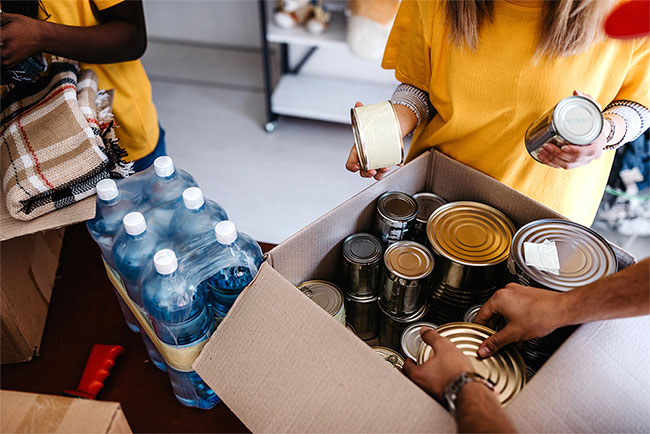In the last three blogs, Is Your Organization Prepared for a Disaster, Organizational Disaster Resilience: A Team Sport, and Individual Preparedness: An Imperative, we looked at what it takes to prepare our organizations for disasters, how to engage the teams, and how to prepare at the individual level. In this final blog, we will explore some of the many ways that you can get involved at the community, county, regional, state, national, or even international level.
Having worked many disaster events, large and small, I can vouch for the outpouring of support that comes with communities coming together. I also know that when that support is disorganized (just good people bringing supplies or offering to help), it often does not have the intended impact or does not have a timely impact. On the other side of the coin, there were times when I wanted to help during a disaster but did not have the associations or affiliations in place to do so.
So, what if I want to volunteer?
First, I would start with promoting the idea of your organization (Health Center) supporting disaster and relief efforts: you already work in an environment designed for providing care (physical and emotional). How will you, and the organization, continue to provide disaster services and care in the event that your organization is impacted/lost, and you still want to help serve the community? Also, when organizations support their employees in these volunteer arrangements, they themselves get better prepared and more tightly integrated into the community— a win-win.
If you are looking for something more established and potentially with a broader impact, here are some great options to consider:
The American Red Cross
While I am sure you already know that the Red Cross is a major provider of CPR, AED, and First Aid training, did you know that they have a congressional charter “to maintain a system of domestic and international disaster relief, including mandated responsibilities under the National Response Framework coordinated by the Federal Emergency Management Agency (FEMA)”?
With a Red Cross office always nearby, they are a great option. For more information, click https://www.redcross.org/volunteer/become-a-volunteer.html
The Community Emergency Response Team (CERT) Program
CERT “educates volunteers about disaster preparedness for the hazards that may impact their area and trains them in basic disaster response skills, such as fire safety, light search and rescue, team organization, and disaster medical operations.” Having worked in several large-scale events where CERT was involved, I can personally attest to the importance of their work, the quality of their training, and their positive impact on the communities that they serve.
While CERT teams are managed locally, here is a link to find out more (and to locate your closest team): https://www.ready.gov/community-emergency-response-team
The Medical Reserve Corps (MRC) Program and Disaster Medical Assistance Teams (DMAT)
Want to be able to serve even if your own organization is no longer functional? Having volunteered with an MRC and served as a medic on a DMAT team, I can personally attest to the value of the services provided (and usually in the most critical of times). Not a clinician? There are many support position opportunities available!
MRC: “The Medical Reserve Corps (MRC) is a national network of volunteers, organized locally to improve the health and safety of their communities. The MRC network comprises approximately 180,000 volunteers in roughly 860 community-based units located throughout the United States and its territories. MRC volunteers include medical and public health professionals, as well as other community members without healthcare backgrounds”
For more information and to locate an MRC unit near you, click https://mrc.hhs.gov/HomePage
DMAT: “During disasters and emergencies – and even during large-scale national security events – the need for medical care can quickly overwhelm the system. NDMS Disaster Medical Assistance Teams (DMATs) may be deployed to get people the medical care they need when seconds count.”
For more information and to locate your nearest DMAT team, click https://www.phe.gov/Preparedness/responders/ndms/ndms-teams/Pages/dmat.aspx
Other Opportunities
While several opportunities were covered in this blog, there are MANY more out there. Here are just a few trustworthy, high-quality organizations to consider: https://www.ready.gov/volunteer
So, there we have it. Prepare yourself, your teams, and your organization…and then if you still want to do more, volunteer.
Stay safe!
Article by DJ Phalen, MA, BSPH, CHPP, EMT, NHDP-BC, CHSO, TLO, of our parent company Health Center Partners DJ Phalen serves as the Director of Operations for Emergency Management, Security, and Facilities for Health Center Partners of Southern California (HCP). In this role, DJ represents the HCP family of companies as well as member community health centers in San Diego, Riverside, and Imperial Counties at the local, county, and state level, and supports preparation for public health emergencies through the Emergency Preparedness and Response Program.
American National Red Cross. (2019). Our Federal Charter: Our Relationship with the Federal government. Retrieved from https://www.redcross.org/about-us/who-we-are/history/federal-charter.html
Office of the Assistant Secretary for Preparedness and Response. (2019). Medical Reserve Corp. Retrieved from https://mrc.hhs.gov/HomePage
Ready.gov. (2019). Community Emergency Response Team. Retrieved from https://www.ready.gov/community-emergency-response-team
Ready.gov. (2019). Volunteer. Retrieved from https://www.ready.gov/volunteer
U.S. Department of Health and Human Services. (2017). Disaster Medical Assistance Teams. Retrieved from https://www.phe.gov/Preparedness/responders/ndms/ndms-teams/Pages/dmat.aspx
